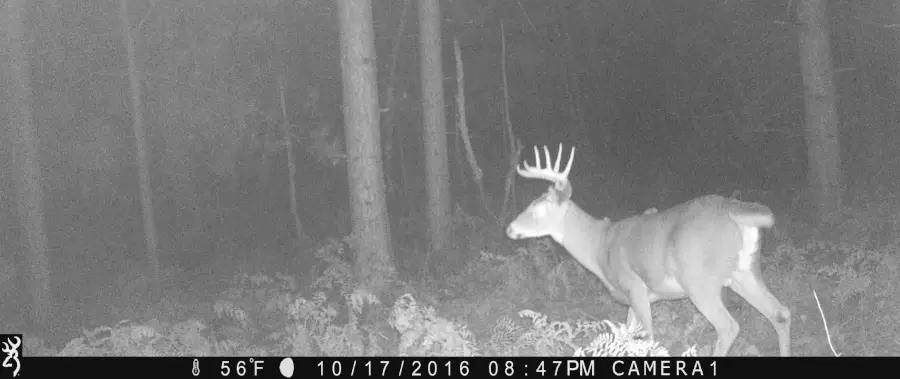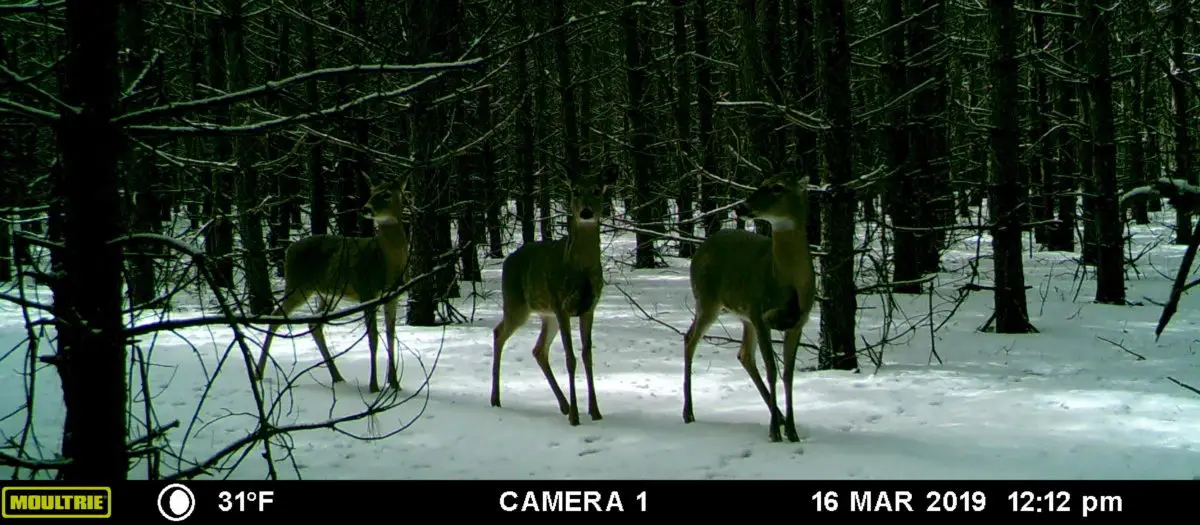Every time I pick up a new trail camera, it seems that there is a new feature or setting that is slightly different than I have used before. The settings are getting more complex, more adjustable, and more specialized for specific situations. These are all great things to have for someone like myself who runs cameras year round, and has dove deep into the inner workings of them. But the questions that I field more often than any other are those that revolve around the delay setting of a trail camera.
The delay setting is a basic setting that almost every trail camera has, but the terminology of delay may be confused with the trigger speed of a trail camera. The trigger speed is the amount of time it takes for the trail camera to take and record the photo once the camera detects an animal.
The delay setting is a feature that a trail camera uses to determine how long the camera will be inactive after taking a series of photos or a video. Each model of trail camera will offer different delay lengths but as a whole the delay setting can be anywhere from no delay all the way to 1 hour.
Importance of a Trail Camera’s Delay
While the delay feature on your trail camera may be the most overlooked setting, if used correctly it can save your battery, the space you have on your SD card and the amount of time it takes to sift through weeks of trail camera photos.
Saving Battery
Every time your trail camera senses motion and heat from the passive infrared sensor (PIR sensor) it provokes a series of events that ultimately take the photo. The series contains measuring light from the light meter, enacting a reading of exposure tables inside the firmware, adjusting IR filters, light emitters, shutter speeds, and ultimately collecting images on the image sensor and loading them onto the SD card. Every bit of these moving parts takes battery power to complete. Using a longer delay on the camera will shorten the number of follow up photos you will have with the same animal.
Lets take for example you are using your camera over a feeder. Animals specifically deer will stay around the feeder for a considerable amount of time to feed. If you were to set your delay time on your camera to a short 5 second delay, you would collect 12 sets of photos every minute that deer would be at that feeder. Your trail camera would go through the entire process of taking a photo 12 different times, drawing battery power from your power supply. Setting a longer delay to around 5 minutes would minimize power consumption.
If you are like me and want multiple pictures of a deer, especially one that might have antlers, the best option is to use a larger number of photos taken in burst mode. Cameras vary to what they offer, but most cameras will offer anywhere from 3 to 9 photos in burst mode. Where this differs in power consumption is that the camera will only measure light, read the exposure tables, adjust the IR filters, enact light emitters, and choose a shutter speed one time for all of the photos in a burst mode. Meaning the only battery consumption that is being used is to actually take the photo, collect it on the image sensor, and load it to the SD card. Combining longer delays with larger burst modes will give you a similar number of photos and use half of the battery.

SD Card Space
If you are leaving your trail camera out for months at a time, you will find that Choosing the right SD card will be vitally important. With that said, the SD card that you choose will fill up quickly with a short delay. An 8 MP photo resolution camera will be able to load approximately 2,800 photos onto an 8GB SD card. If you leave a camera out to soak for two months that is roughly only 45 photos a day.
In some areas 45 photos a day may seem like a lot of photos, but if you are hanging your camera in an area where deer will concentrate like a feeder, the edge of a field, or a bedding area, you could easily fill your SD card in a matter of days. Again, using a longer delay would be beneficial in getting longer life out of the SD cards capacity.
Sifting Through Photos
If you are using only one or two trail cameras, looking through and deleting a couple thousand photos might not seem like much of a problem. When you begin to run 10-20 cameras, and every camera is filling the SD card, you are now finding yourself spending hours looking through 20-30 thousand photos of the same doe and fawn feeding on the field edge.
This process becomes cumbersome and time consuming. It becomes even worse when you trail camera picks up false triggers due to the wind blowing or the sun setting creating shadows. Simply adjusting the delay setting to a longer time period will assure that photos between triggers are at least unique.
When To Use a short Delay
Not all circumstances call for using a long delay setting. In fact most of the time my delay settings are set to be very short. There are times during the year, and locations of your trail camera, where a short delay is more convenient.

During the Rut
During the rut, when bucks are chasing does, you will want a very short delay. Not always are bucks right on a doe’s tail, in fact most often bucks will follow a doe anywhere from 15 seconds to 5 minutes behind. In these circumstances, the last thing you want is to have a long delay. I often use as quick of a delay as the camera allows, assuring that if there is a deer following behind I am assured to get a photo of him too.
Pinch Points
Similar to times during the mating season, when you set you camera up on pinch points, such as funnels, creek crossings, and saddles, you are going to want to use a short delay setting. In these situations the deer are typically moving through the area at a quick pace. They don’t linger around causing your camera to get bogged down with the same deer for 20 minutes. Once they pass through, having the ability to capture another deer immediately after is beneficial to you.
During Hunting Season
Most people use trail cameras specifically for hunting season. Having a short delay during this time of year makes sense, especially if you plan on checking your camera on a regular basis. During the hunting season the name of the game is to get as much information as possible to make informed hunting decisions. It wouldn’t make sense to lose out on even a bit of information during this period with a long delay.
Using the delay feature can have many benefits to your trail camera strategy. It is an easy setting that pays out great dividends once you take the time and experiment with what works best for your situation. Use the delay in combination with your burst settings and you will quickly realize how helpful this simple, yet effective tool is.

